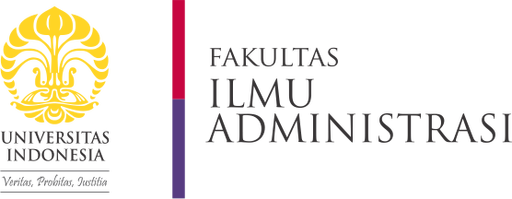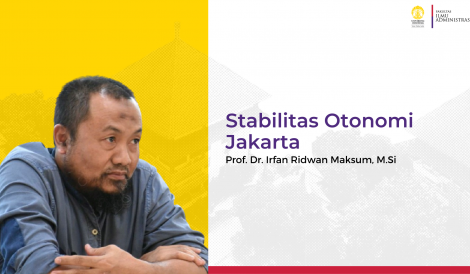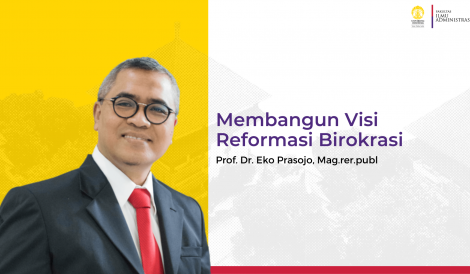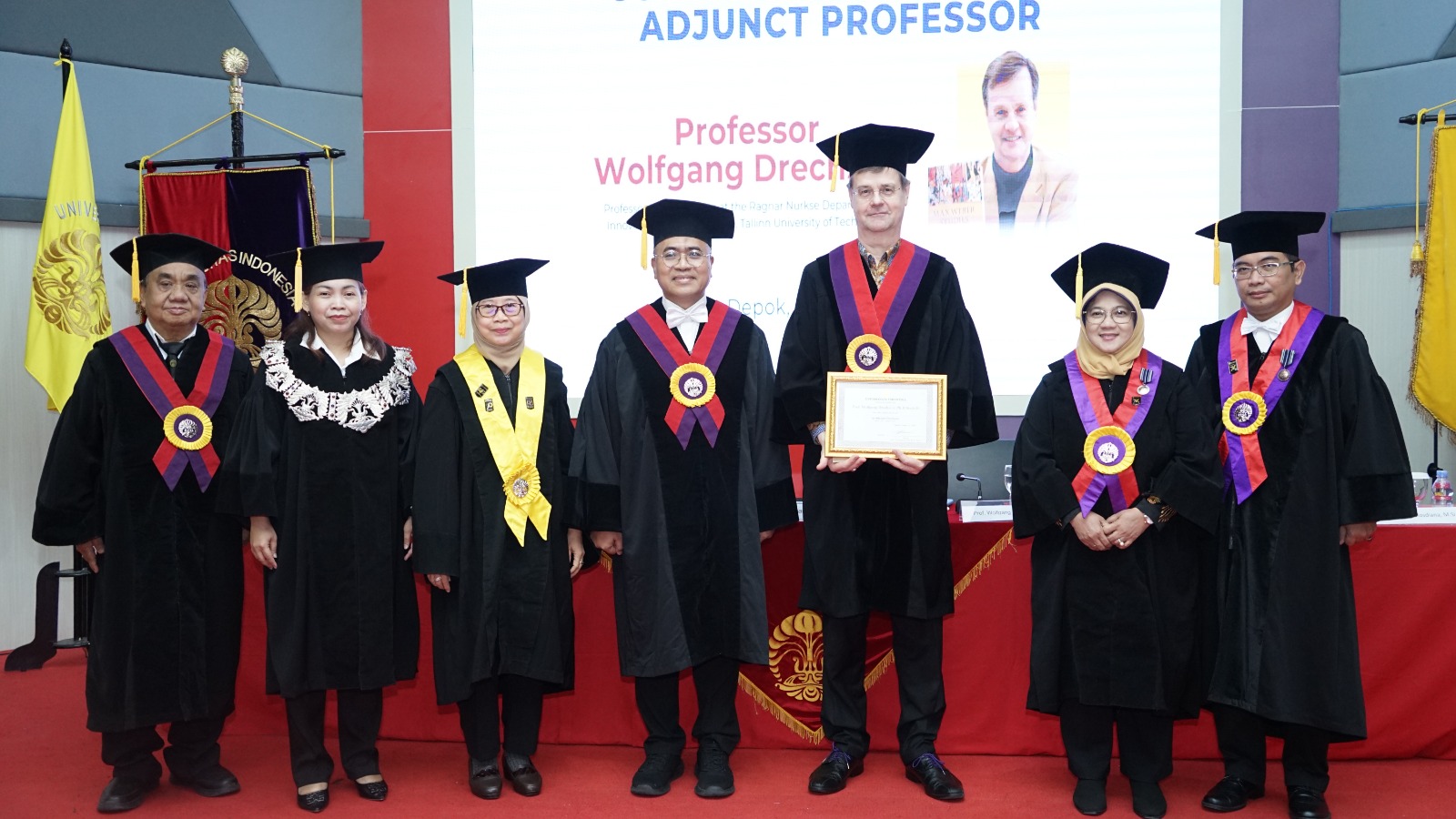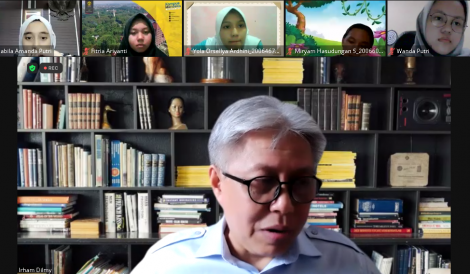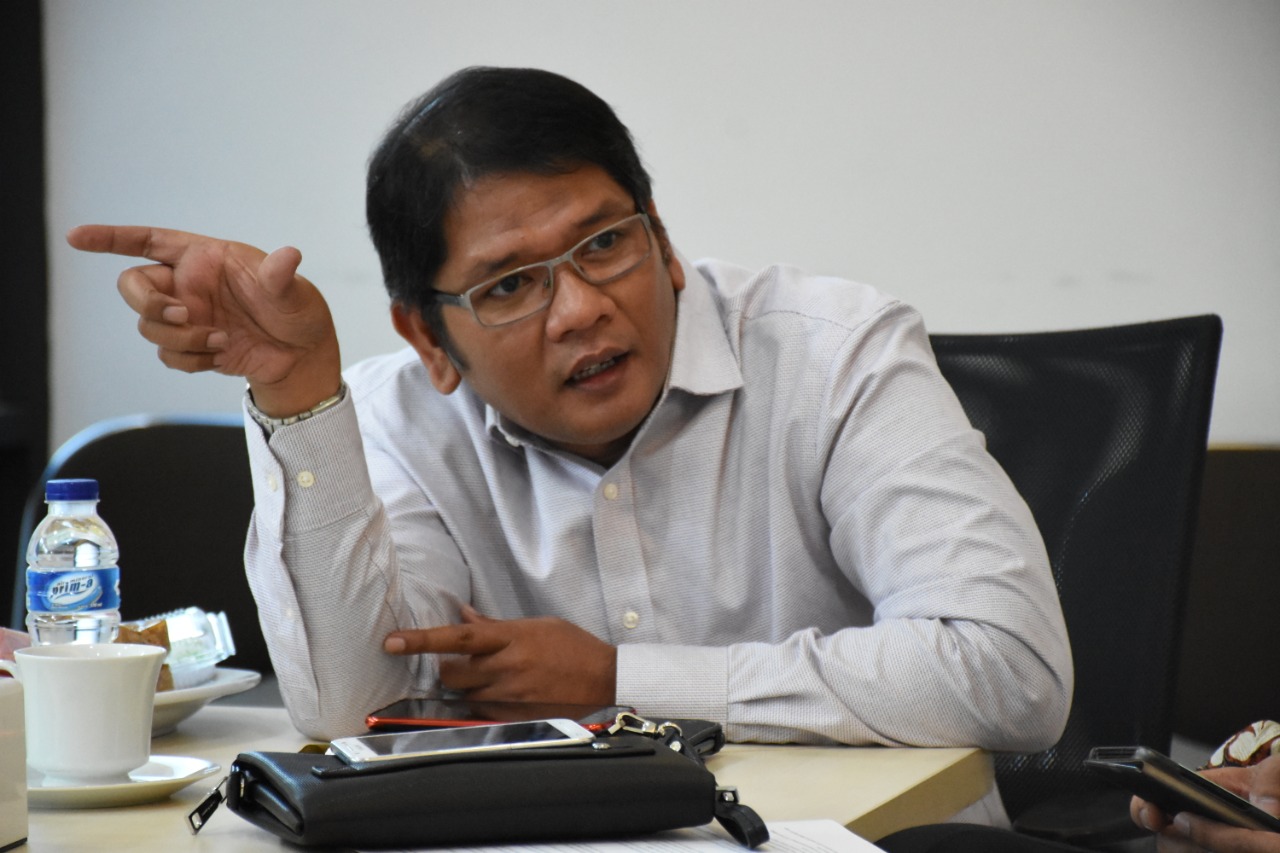Coal as a natural resource from fossils is an important energy source for Indonesia. Thus, it is necessary to find new answers to the dynamics and challenges of future coal governance scenarios. The development of the model (proxy model) using the System Dynamics method shows the multifacetedness of governance, where various policies, norms, and behavioral arrangements as interactions between the government (government), business actors, and communities/society individually or simultaneously influence each other, providing dynamic response to changes and/or interventions that occur and not just one type of governance that is dominant for the entire system.
This was conveyed by Dr. Sidik Pramono, online during the Doctoral Promotion Session which was held virtually on Tuesday afternoon (28/12). The dissertation with the theme Dynamics and Scenarios of Indonesian Coal Governance was prepared under the guidance of Prof. Dr. Irfan Ridwan Maksum, M.Sc. as promoter and Dr. Andreo Wahyudi Atmoko as the co-promoter and the trial was led by the Dean of FIA UI Prof. Dr. Chandra Wijaya, M.Sc., M.M.
According to him, the scenario of Indonesian coal governance is built based on a vision to be addressed, which in the proxy model is then simulated based on interventions on variables in the system, either individually or simultaneously in accordance with the concept of a strategy that not only depends on a single policy, but also depends on a single policy. built an approach with a variety of intervention variables. “There are several alternative scenarios based on different visions, such as ‘holding the chimneys’ which are based on the vision to make environmental conditions better and ‘retaining the outflows’ with the vision of prioritizing domestic interests where resource exploitation is only done in a limited way. according to domestic needs,” he said.
In his research, the dynamics of Indonesian coal governance, especially regarding the licensing policy for exploitation, is reflected in the shift in institutions that regulate and implement formal provisions that must be carried out, namely from centralization where control by the government at the national level is dominant, shifting towards decentralization, and return to centralization where licensing regarding the exploitation and processing of Indonesian coal is again handled directly by the central government. “The dynamics of governance shows the combination of various types of governance with the involvement and role of stakeholders in the system, namely hierarchical governance, markets, and networks that mutually influence each other, providing dynamic responses to changes and/or interventions that occur,” he explained.
The governance factors, which are represented in a dynamic model as a “proxy” to see very complex issues, can be grouped into three main subsystems in Indonesia’s coal governance system. “That is, concerning the availability of resources, supply chains, and also market dynamics, all of which work and influence each other at various levels from the local level to the global level. The complexity of the factors that affect Indonesian coal governance is also marked by the interactions that occur between the government (government/G), the private sector (private sector/P), and the community (community/C),” he explained.
He added that the factors that affect Indonesian coal governance move dynamically based on different mental models, depending on the dominance of the type of governance and also the stakeholders in each subsystem.
“The pattern of relationships between factors that occur in the proxy model simulation with the behavioral patterns so far shown by historical data, shows a tendency for a gap between supply and demand in the country which shows the importance of government intervention as a representative of the state with the formulation of directions and policies and enforcement provisions optimally – which emphasizes the dominance of hierarchy governance in terms of policy design and implementation,” explained Sidik.
From the simulated alternative scenarios, he explained that the ideal scenario by considering the priority of meeting domestic needs is like a combination of the ability to “play the gas and brake levers” because the improvement in conditions that have been going on so far cannot only be done by intervening on one side or certain factors. , without considering the conditions holistically and comprehensively by involving and/or considering the actors affected or influential in the Indonesian coal governance system.
“In this scenario, Indonesia’s coal production capacity must be controlled, where the coal produced is then prioritized to meet domestic needs first, especially for power generation needs, which so far absorb the largest allocation of Indonesian coal production,” he explained.
This condition is also to provide adequate time as a transition period if it is agreed to switch the priority of electricity procurement from new and renewable energy sources. Next, the allocation of coal for export must also be limited. The opportunity to increase export capacity opens when the domestic fulfillment target has been achieved and the domestic market capacity has reached a positive point, which based on empirical data is projected to occur after 2040.
From a policy point of view, the Indonesian coal governance model as simulated in this study shows how functional intervention in the system will not provide a significant change in pattern which is a reflection of the behavior that has occurred so far. “This confirms that efforts to optimize Indonesian coal require a much more complex approach, with structural and comprehensive governance changes that require responsive changes to the variables/factors as identified in the Indonesian coal governance model. This change requires the role of various parties, who with their authority or power can influence governance through policies, norms, or good practices that can be implemented. Governance orchestration is required in accordance with the objectives of Governance,” he concluded.
While theoretically, Sidik emphasized that this research contributes to the development of governance theory, especially regarding natural resources and specifically regarding coal. “From the research, it can be seen that various factors in governance work together, moving the system as a whole as a unified model. Hierarchical, market, and network approaches can work together with their respective interactions and power of influence. This enriches the concept of collaborative and/or hybrid governance, which allows stakeholders to take a role in influencing each factor/variable in the governance model,” he said.
